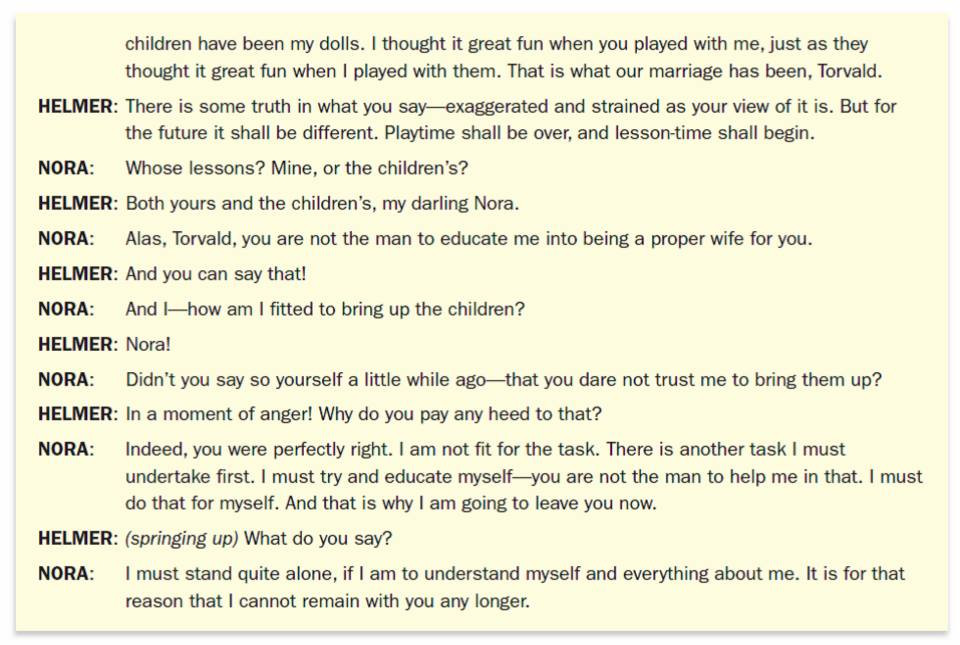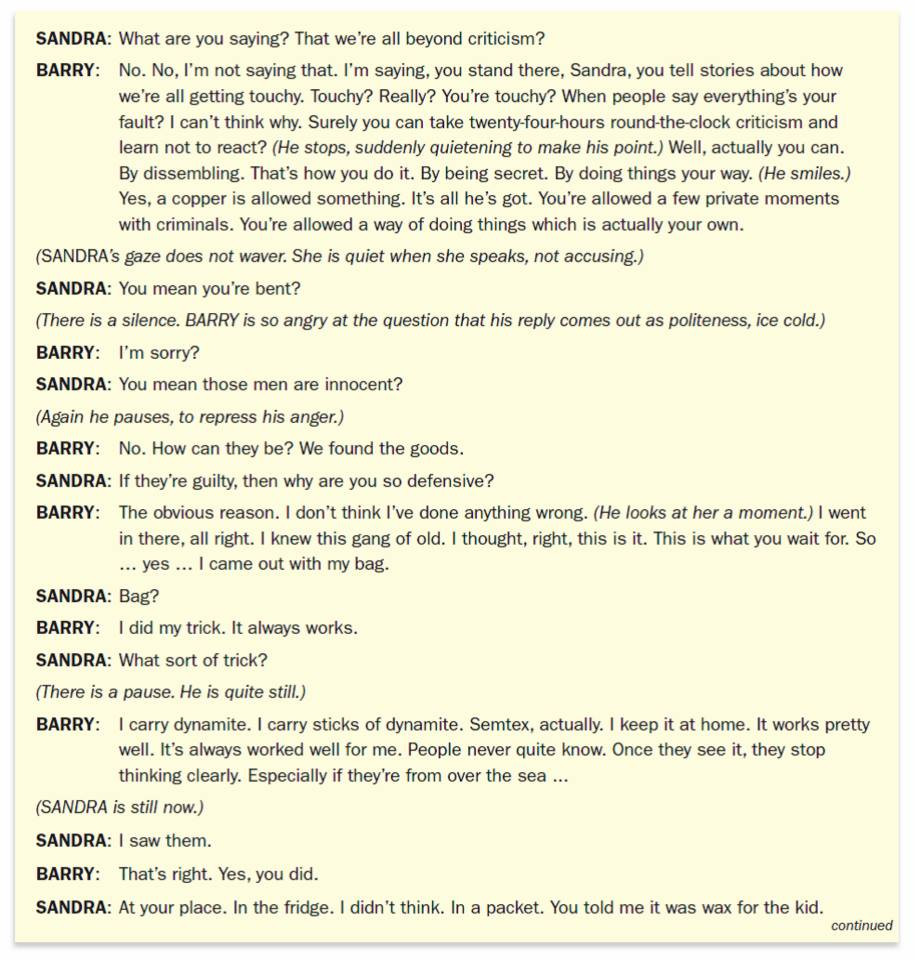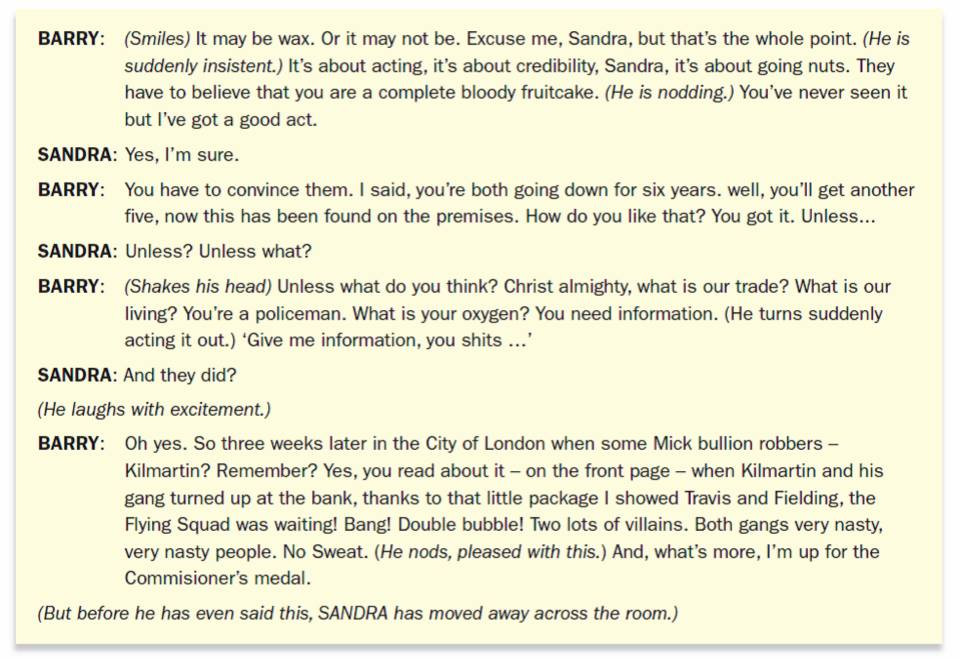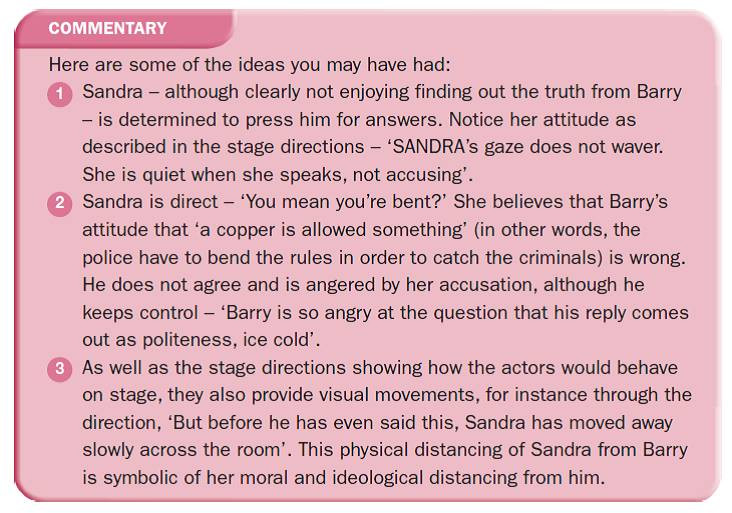Themes & Issues
After studying this section, you should be able to:
• identify ways in which dramatists present themes in their plays
• recognise the themes in the play that you are studying
How Dramatists Present Themes in their Plays
One of the main purposes of a play is to entertain the audience. However, very often a play has another purpose too – that of making us think. By reading and watching plays, we can learn a great deal about human relationships and the kind of problems, dilemmas and conflicts that human beings may encounter in their lives. Very often a dramatist creates his or her play around an idea – or set of ideas – that will be explored through the development of the drama. These ideas are the themes of a play.
The audience can be made aware of themes in a number of ways:
• The dramatist can use a character to express certain ideas or views.
• The action of the play can involve the development of the theme(s).
• The setting might be important and contribute to thematic development.
• Stage directions can reveal attitudes or ideas.
• The dramatist may use symbolism and imagery.
Plays can have the power to provoke deep thought and personal reactions from members of the audience or readers.

Example – The Doll’s House
Ibsen’s The Doll’s House explores a number of themes or ideas, but one of the central ones is the sacrifices made by women in a male-dominated society. The play created much controversy when it first appeared in 1879 for the way in which it challenged the traditional roles of men and women in nineteenth-century marriage. In the play, after an incident that has shattered her confidence in her husband, Torvald Helmer – and after years of playing the dutiful wife and mother – Nora realises that she must re-assess her life. She sees that she must leave her husband. Look at the following passage from the point in the play when Nora confronts her husband. Make a note of the ideas that Ibsen explores through the dialogue of the play.



Example – Murmuring Judges
In his play, Murmuring Judges, David Hare examines different aspects of the criminal justice system, focusing on three elements – the police, the courts and the prisons. Through the play he explores a number of themes, including the position of women in the police force and the legal profession, conditions in prisons, and the disparity between the privileged classes and those at the bottom of the social spectrum. He also explores the issue of corruption of different kinds.
In this extract, a young woman police officer, identified as a ‘high-flyer’, confronts her friend and colleague, Barry, a detective constable, about his illegal methods of achieving arrests.
Think about the ways in which Hare presents this episode, and reveals to the audience both Sandra’s and Barry’s attitude towards policing.




